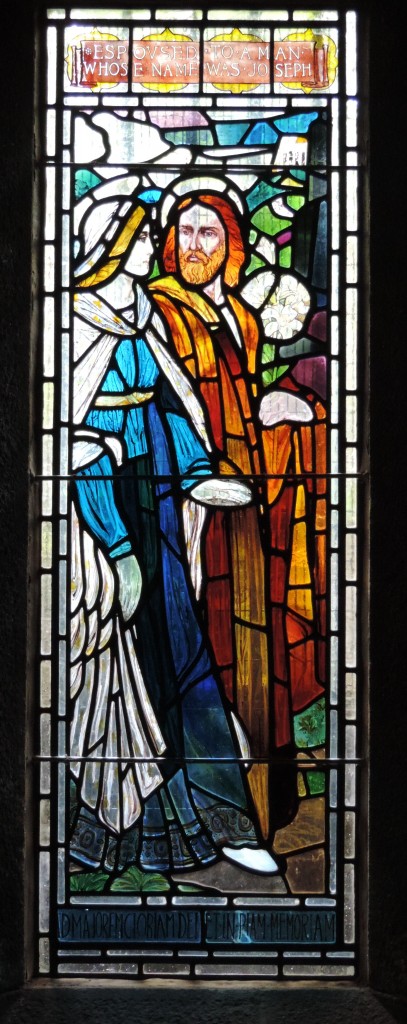
One of the most beautiful windows in St Mary’s Chapel depicts the ‘Betrothal of Mary’. The Jewish customs of two thousand years ago may seem rigid compared with what we are used to in the West today. These customs meant that the engagement was probably arranged by the parents, maybe without Mary or Joseph being consulted. There would need to be a contract, part of which would be the ‘bride price’ to be paid by the groom’s family. The contract was implemented immediately and was binding on the couple. In effect they were considered married, but what we think of as a wedding ceremony would not occur for a considerable time, sometimes up to a year, later. During their betrothal, the couple would have little contact with each other, in order to test their commitment to each other. When Mary and Joseph became engaged is not known. In their case the events of this ‘pre-consummation’ phase of their marriage certainly tested them, following Mary’s pregnancy with Jesus. The Bible tells us that Joseph was minded to break off the relationship, but was dissuaded by the Angel Gabriel.
The window was created by the Aberdeen artist Douglas Strachan in 1899 when still in his twenties. He studied at Robert Gordon’s College and Gray’s School of Art in Aberdeen before working as an illustrator on newspapers in the north of England. He was persuaded to try designing stained glass. This window in St Mary’s Chapel is his very first commission (there is a later example of his work upstairs in the former East Kirk). He was prolific in his work with stained glass all over the United Kingdom and some overseas. By 1908 he had moved to live in Edinburgh from where he worked for the rest of his life. The University of his home city awarded him an Honorary Doctorate in 1923. His largest commission was for the windows of the Scottish National War Memorial in Edinburgh Castle. He died at his home in Midlothian in 1950 at the age of 75 and is buried in the Dean Cemetery, Edinburgh. The window was restored as part of the Mither Kirk Project in 2010 following some damage due to vandalism.